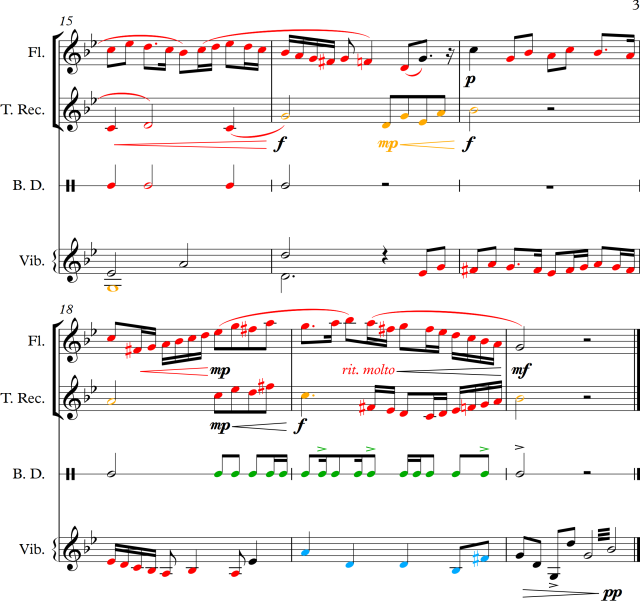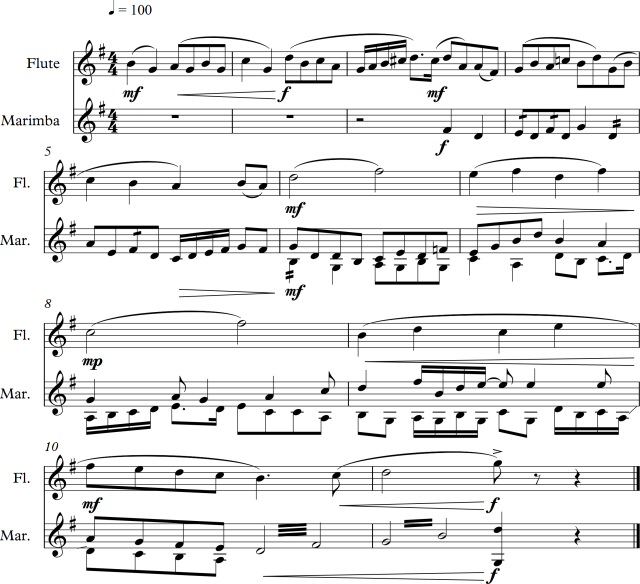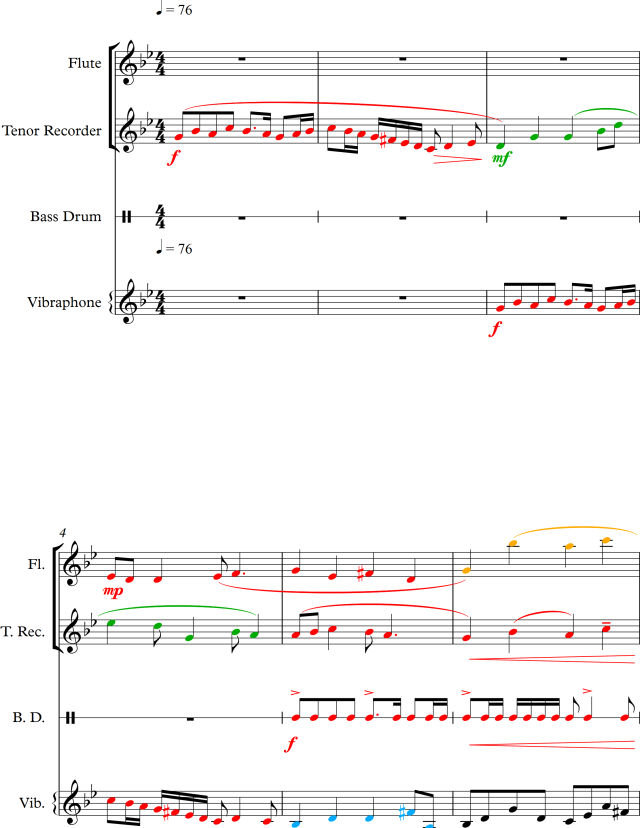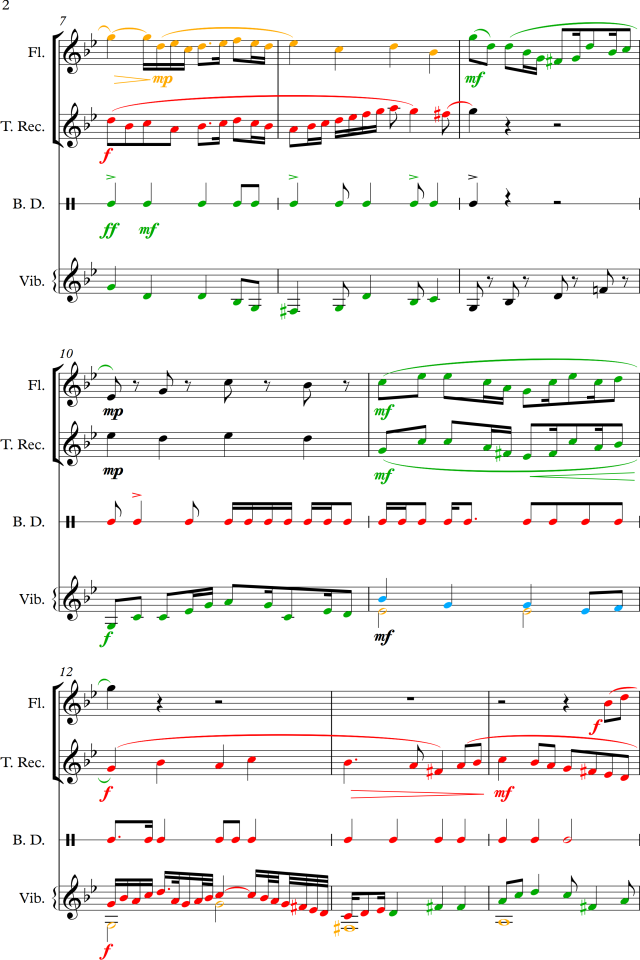Invention 1
For the first attempt, I wanted to put some “tropical air” to a technique some consider heavier. To get that tropical breeze, I chose the flute and the marimba (a friend of mine from Guatemala loves it, so this goes for him).
It starts with a flute solo presenting the main motif. In the middle of the third bar, the marimba imitates the motif at the dominant. In bar six, the main motif appears again as a second voice in the marimba, this time transposed one octave lower than the original; at the same time, the flute presents the motif in augmentation, inversion and transposition. The last entry of the motif takes place in bar 9, and it is a repetition of the second marimba voice (one octave lower than the original), this time in diminution.
I originally placed this one as part of Project 11, because I was working with several pieces at once and I mixed them up. But then I realized that this was out of the range of “an accompanied melody” – hence the re-placing.
Invention 2
(extract from my notes on it)
Originally I started it as a G major, but I found it too little inspiring. I just tried changing the key – and that fitted me much better!
There are two motifs. I considered writing a mini-fugue, or a fugato section at least – but it would be too long in the end.
The sound I liked most for this piece was that of the pan pipes. However, I know how tiring it can be (maybe I just don’t know the technique for it, but in my experience, the amount of air needed to blow a note in a recorder, a clarinet, a Turkish zurna, or a harmonica, is quite different than that needed to make a sound on a pan pipe) and the dynamics are very hard to work with.
Alternation of woodwind: while I was listening to it, it became clear to me that an alternation of two instruments would make the piece more interesting, even if one of them was there just to complement here and there. On the other hand, it is supposed to be a two-part invention… With an unpitched percussion instrument, it’s already a fourth-part one.
After listening to it several time, I thought I was probably falling into the same mistake of charging too much the music since the very beginning. I took a couple of bars out, and probably will have to take some others. Considering both motifs, there’s more than 25 entries in 20 bars. Mr. Standford uses the expression “contrapuntal indigestion” in the course notes, in a different context, yes, but – am I not falling into that?
There are two motives. The one in red is the main one, including its imitations, inversions, augmentations, diminutions and reflexions (played backwards). The second one is in green, again with all the variations. Orange and blue are false entries (or shorter ones)
 Both motifs are subject to imitation (exact and transposed), inversion, diminution, and retrograde (mirror) writing. Motif A is also subject to augmentation.
Both motifs are subject to imitation (exact and transposed), inversion, diminution, and retrograde (mirror) writing. Motif A is also subject to augmentation.
The character of both variations is different to my eyes. However, when I look at the rhythmical figures and the sequences of intervals, I find quite a few common points. I think I’ll repeat this part of the project further on.
(If anybody wants to listen to Invention 2, you can do so by clicking here)



